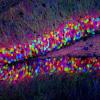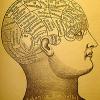What about Niacinamide...
ScienceGuy, thanks for all this helpful info. I was wondering where you would place niacinamide on your go/no-go list of substances ?
I'm curious to know because it is very effective for me in relieving anxiety...
NIACINAMIDEI have added NIACINAMIDE to the
POSSIBLY TO AVOID list, for four reasons, namely:
1) There is evidence that NIACINAMIDE is NEUROTOXIC when taken at the high doses that produce its ANXIOLYTIC effects.
2) There is evidence that to some extent NIACINAMIDE exerts at least part of its ANXIOLYTIC effects via the GABA PATHWAY / RECEPTORS; however, there currently is conflicting information regards the full extent that NIACINAMIDE influences the GABA RECEPTORS, in that whilst some studies indicate that NIACINAMIDE is very much a GABA RECEPTOR AGONIST, others indicate that NIACINAMIDE is either NOT a GABA RECEPTOR AGONIST or is a very weak one.
3) There is an ever increasing amount of evidence that indicates taking MEGA DOSES / OVER-DOSES of VITAMINS is ill advised and may present a variety of HEALTH RISKS when taken for the long-term; this applies to NIACINAMIDE, which is a form of VITAMIN B3.
4) NIACINAMIDE when taken at the high doses that produce its ANXIOLYTIC effects has a number of potential SIDE EFFECTS, which includes (but is not limited to): DRY MOUTH, NAUSEA, SEDATION, and HEPATIC (LIVER) TOXICITY
(N.B. this specifically is DOSAGE DEPENDANT).STUDIES INDICATING THAT NIACINAMIDE IS NEUROTOXIC:Neurosci Lett. 1985 Mar 15;54(2-3):173-7.
gamma-Aminobutyric acid modulation of benzodiazepine receptor binding in vitro does not predict the pharmacologic activity of all benzodiazepine receptor ligands.Chweh AY, Swinyard EA, Wolf HH.
Abstractgamma-Aminobutyric acid (GABA) modulation of triazolam and nicotinamide binding to benzodiazepine (BDZ) receptors in vitro was compared with the neurotoxicity and anticonvulsant activity of these two drugs in vivo. GABA had no significant effect on the inhibitory potency of triazolam in [3H]flunitrazepam receptor binding, whereas GABA decreased the inhibitory potency of nicotinamide. When administered to mice, both triazolam and
nicotinamide [niacinamide] exhibited neurotoxicity by the rotorod test and anticonvulsant activity by the pentylenetetrazol seizure threshold test. This suggests that GABA modulation of the receptor binding of a BDZ ligand in vitro is not a reliable predictor of the pharmacologic activity of the ligand.
PMID: 2859562
----------------------------------------------------------------------------------------------------------------------------------------------
J Neurochem. 2000 Sep;75(3):982-90.
2-Deoxy-D-glucose prevents and nicotinamide [niacinamide] potentiates 3, 4-methylenedioxymethamphetamine-induced serotonin neurotoxicity.Hervías I, Lasheras B, Aguirre N.
SourceDepartment of Pharmacology, University of Navarra Medical School, Pamplona, Spain.
AbstractNeurotoxicity induced by different substituted amphetamines has been associated with the exhaustion of intracellular energy stores. Accordingly, we examined the influence of 2-deoxy-D-glucose (2-DG), a competitive inhibitor of glucose uptake and metabolism, and nicotinamide, an agent that improves energy metabolism, on 3, 4-methylenedioxymethamphetamine (MDMA)-induced 5-hydroxytryptamine (5-HT; serotonin) deficits. Administration of MDMA (15 mg/kg i.p.) produced a significant hyperthermia, whereas 2-DG caused a profound hypothermia that lasted throughout the experiment. When MDMA was given to 2-DG-treated rats, an immediate but transient hyperthermia occurred and was followed by a return to hypothermia. 2-DG had no effect on 5-HT concentrations in the frontal cortex, hippocampus, and striatum but prevented the neurotoxicity induced by MDMA. When rats were injected with 2-DG/MDMA and were warmed to prevent hypothermia, the protection afforded by 2-DG was abolished. Nicotinamide had no effect on body temperature of the rats, and the hyperthermia induced by the nicotinamide/MDMA treatment was similar to that of the saline/MDMA-treated rats. However,
the long-term 5-HT deficits induced by MDMA were potentiated by nicotinamide [niacinamide] in all the brain regions examined. Finally, no change on ATP concentrations in the frontal cortex, hippocampus, and striatum was observed up to 3 h after a single dose of MDMA. These results suggest that an altered energy metabolism is not the main cause of the neurotoxic effects induced by MDMA.
PMID: 10936179
----------------------------------------------------------------------------------------------------------------------------------------------
STUDIES INDICATING THAT NIACINAMIDE IS NOT (OR IS A VERY WEAK) GABA RECEPTOR AGONIST:Br J Pharmacol. 1985 March; 84(3): 689–696.
Central effects of nicotinamide and inosine which are not mediated through benzodiazepine receptors.J. M. Bold, C. R. Gardner, and R. J. Walker
AbstractThe actions of nicotinamide and inosine were investigated on rat cerebellar Purkinje cells using ionophoretic and extracellular recording techniques. Ionophoretic application of nicotinamide or inosine showed that they were potent inhibitors of Purkinje cell firing. This inhibition differed from that induced by benzodiazepines in that it was not reversed by the GABA antagonists bicuculline methiodide and picrotoxin. RO 15-1788, the specific benzodiazepine antagonist, did not reverse the effects of nicotinamide. Chlordiazepoxide has been shown to increase significantly social interaction between pairs of male rats and this increase can be reversed by RO 15-1788, 20 mg kg-1 i.p. Nicotinamide also caused a small increase in social interaction but this effect was not reversed by the benzodiazepine antagonist. Inosine did not increase social interaction. [3H]-flunitrazepam
binding studies showed that nicotinamide and inosine
have only low affinities for the benzodiazepine binding site. These results suggest that while nicotinamide may exert some neuronal depressant and anxiolytic activity, its site of action appears not to be associated with the benzodiazepine receptor site. Similarly, inosine exerts a neuronal depressant effect dissimilar from that of benzodiazepines.
----------------------------------------------------------------------------------------------------------------------------------------------------------------------------------------------------
Biokhimiia. 1989 Mar;54(3):381-6.
[
Solubilization of the central benzodiazepine receptor and study of its interaction with nicotinamide].
[Article in Russian]
Fomenko AI, Stepanenko SP, Donchenko GV, Khalmuradov AG.
AbstractIt was shown that nicotinamide and NAD inhibit the specific binding of [3H]flunitrazepam to benzdiazepine receptors without causing a direct influence of gamma-aminobutyric acid (GABA) receptors. The GABA-benzdiazepine complex was separated by solubilization with 0.5% lubrol PX. The solubilized preparations contain the binding sites for [3H]flunitrazepam alone (Kd = 5.9 nm). The Kd value for the membrane-bound benzdiazepine receptor is 2.9 nM. NAD inhibited the specific binding of [3H]flunitrazepam to the solubilized membrane preparation when used at concentrations by several orders of magnitude lower than that of nicotinamide. Using gel filtration on Sepharose 6B-CL, the molecular mass of the soluble benzdiazepine receptor protein was determined.
PMID: 2546611
-----------------------------------------------------------------------------------------------------------------------------------------------------------------------------------------------------
STUDIES INDICATING THAT NIACINAMIDE IS A GABA RECEPTOR AGONIST:Nature. 1979 Apr 5;278(5704):563-5.
Nicotinamide is a brain constituent with benzodiazepine-like actions.Möhler H, Polc P, Cumin R, Pieri L, Kettler R.
PMID: 155222
-----------------------------------------------------------------------------------------------------------------------------------------------------------------------------------------------------
Ann Ist Super Sanita. 1982;18(1):95-8.
Pharmacological effects of nicotinamide. Probable endogenous ligand of benzodiazepine receptors.Voronina TA.
PMID: 6303184
-----------------------------------------------------------------------------------------------------------------------------------------------------------------------------------------------------
J Orthomolecular Medicine 2005; 20(3): 167-178
Supplemental Niacinamide Mitigates Anxiety Symptoms: Three Case ReportsProusky J E
Extract from Full TextAbstractThe purpose of this report is to highlight the potential of niacinamide for the treatment of anxiety disorders. Three patients
were prescribed large pharmacological doses of niacinamide (2,000-2,500 mg per day). Each of the patients had considerable relief from their anxiety when regularly using niacinamide.
The possible biochemical reasons for niacinamide’s effectiveness might be related to the correction of subclinical pellagra, the correction of an underlying vitamin B3 dependency disorder, its benzodiazepine-like effects, its ability to raise serotonin levels, or its ability to modify the metabolism of blood lactate (lactic acid). Adverse effects did not occur with these doses, but nausea and vomiting can occur when doses as high as 6,000 mg per day are used. These positive case reports suggest that niacinamide might be helpful for the treatment of anxiety disorders. However, definitive proof requires properly conducted randomized controlled trials to assess niacinamide’s actual therapeutic effects and adverse effects profile.
Benzodiazepine-like PropertiesAdditional reasons for niacinamide’s effectiveness likely have to do with its benzodiazepine-like effects. In a previous review of the literature by Hoffer, both niacin and niacinamide were shown to have some sedative activity, and were able to potentiate the action of sedatives, anticonvulsant medications and certain tranquilizers.24
In a recent case report by this author, a review of the literature was undertaken to determine the biological mechanism for niacinamide’s anxiolytic effects.14 Table 2 (p.174) summarizes this data.25-30 It appears that niacinamide has therapeutic effects comparable to the benzodiazepines.
Its therapeutic effects are probably not related to it acting as a ligand for the benzodiazepine receptor, although it acts centrally and might have a weak binding affinity for the benzodiazepine receptor.Both the benzodiazepines and niacinamide exert similar anxiolytic effects through the modulation of neurotransmitters commonly unbalanced in anxiety.Serotonin SynthesisAnother biochemical reason for niacinamide’s anxiolytic effects might have to do with the vital role that it has upon the synthesis of serotonin. For example, in a patient with anorexia nervosa an insufficient supply of vitamin B3 or protein resulted in reduced urinary levels of the serotonin breakdown product, 5-hydroxy-indolacetic acid (5-HIAA).32 The authors of this report postulated that a deficiency of vitamin B3 reduced the feedback inhibition upon the kynurenine pathway, resulting in more tryptophan being diverted to the kynurenine pathway, making less substrate available for the synthesis of serotonin. By contrast, the use of pharmacological doses of vitamin B3 can increase the production of serotonin.33 In a rat study, the administration of 20 mg of niacin resulted in increased levels of 5-HIAA and decreased levels of anthurenic acid via the kynurenine pathway.34
Taking pharmacological doses of niacinamide (or any other form of vitamin B3) would increase the production of serotonin, by diverting more tryptophan to become substrate for serotonin synthesis.
Niacinamide’s therapeutic ability to increase serotonin production might explain why it was successful in reducing the anxiety symptoms of the three patients.
Modulation of Blood Lactate (lactic acid)The final biochemical reason for niacinamide’s favourable effect might have to do with its ability to modulate the metabolismof blood lactate (lactic acid)…Prescribing InstructionsIn terms of proper dosing, most patients require a minimum of 2,000-4,500 mg per day to achieve therapeutic results…
The most common side effect with niacinamide is sedation,43 but dry mouth and nausea have been the most common side effects... There has been one case report linking large pharmacological doses of niacinamide (9 g per day) to hepatic [liver] toxicity.----------------------------------------------------------------------------------------------------------------------------------------------
Biull Eksp Biol Med. 1986 Mar;101(3):329-31.
[Mechanism of the tranquilizing action of electron structural analogs of nicotinamide].[Article in Russian]
Akhundov RA, Rozhanets VV, Voronina TA, Val'dman AV.
AbstractThe interaction of nicotinamide and its electron structural analogs (NMF and AzN compounds)
with central benzodiazepine receptor antagonist Ro 15-1788 and GABA-ergic system antagonist bicuculline were studied in a conflicting situation test. NMF and AzN behaved as the agonists of GABA-benzodiazepine receptor complex.
Like in diazepam, the anxiolytic effects of benzodiazepines and nicotinamide was prevented by bicuculline and Ro 15-1788. The given compounds were shown to be more active, than nicotinamide.
PMID: 2869801
This study indicates that NIACINAMIDE is a GABA RECEPTOR AGONIST
Edited by ScienceGuy, 25 February 2012 - 01:40 PM.


















































